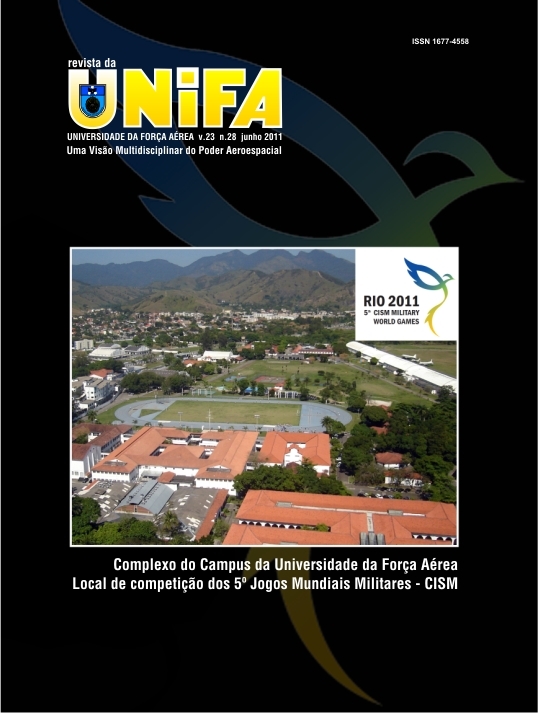The Operational Level 3 and the flow of Galeão International Airport in 2009
DOI:
https://doi.org/10.22480/revunifa.2011.23.640Keywords:
Flow, Operational Level, Airport, Runway capacityAbstract
The flow of an airport is related to the level of delays, takeoffs and landings movements and the runway capacity. The combination of these parameters associated to the operational level determine the level of the operational system serving to identify its sensitive points. In relation to Galeão International Airport, it is known that its flow is connected to five Operational Systems which are determinated by the combinations of the runways in use. In 2010, Galeão Air Space Control Detachment ( DTCEA-GL), responsible for the airport air traffic control asked for the flow of the Operational System 3, according to the runway capacity and the takeoffs and landing movement. In this way, this article has the aim to analyze the influence of the operational system 3 in the flow of Galeão International Airport in 2009. Concerning to the general aim, the research was descriptive and the outline documentary. The data were collected from the Management Air Navigation Center (CGNA) in the rules of DECEA and in DTCEA -GL documents. After that, the information was interpreted according to the General Theory of Systems by Ludwig Von Bertalanffy. The data analysis pointed out the characteristics of the Operational System 3, being determined the flow level for the aerodrome. Finally, it was concluded that there were no evidences the Operational System 3 could have affected the flow of Galeão Airport in 2009.
References
BERTALANFFY, L. V. Teoria Geral dos Sistemas. 4. ed. Rio de Janeiro: Vozes, 2009.
BRASIL. Comando da Aeronáutica. Departamento de Controle do Espaço Aéreo. MCA 100-14: Manual de Capacidade do Sistema de Pistas. Rio de Janeiro, 2009a.
______. Comando da Aeronáutica. Destacamento de Controle do Espaço Aéreo do Galeão. Modelo Operacional da Torre de Controle do Galeão. Rio de Janeiro, 2006.
______. Comando da Aeronáutica. Departamento de Controle do Espaço Aéreo. ICA 100-12: Regras do Ar e Serviços de Tráfego Aéreo. Rio de Janeiro, 2009c.
CHIAVENATO, I. Introdução à Teoria Geral da Administração. 3. ed. São Paulo: McGraw-Hill, 1983.
GIL, A. C. Como elaborar projetos de pesquisa. 4. ed. São Paulo: Atlas, 2002.
HORONJEFF, R. Aeroportos: planejamento e projeto. 1. ed. New York: McGraw-Hill, 1966.
EMPRESA BRASILEIRA DE INFRA-ESTRUTURA AEROPORTUÁRIA. Movimento Operacional. Rio de Janeiro: [s. n.], 2009.
Downloads
Published
Issue
Section
License
Copyright (c) 2023 Juarez Franklin Gouveia

This work is licensed under a Creative Commons Attribution-NonCommercial 4.0 International License.
Revista da UNIFA permite que o (s) autor (es) mantenha(m) seus direitos autorais sem restrições. Atribuição-NãoComercial 4.0 Internacional (CC BY-NC 4.0) - Revista da UNIFA é regida pela licença CC-BY-NC









